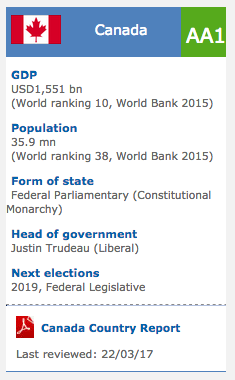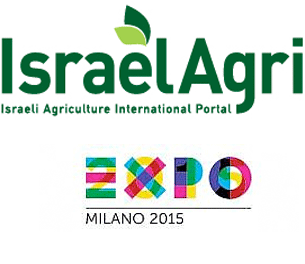Mauritius: Mauritius Art / Culture Profile 2012
2012/06/28
Mauritius Art / Culture Profile 2012
The culture of Mauritius involves the blending of several cultures from Mauritius's history, inclunding individual culture arising indigenously.
Mauritian public holidays and festivals
The number and diversity of public holidays and festivals indicate the rich heritage of the island's people and its ethnic diversity.
Public Holidays on fixed dates:
* New Time– 1 and 2 January
* Abolition of Slavery – 1 February
* National day (Independence Day) – 12 March
* Labour Day - 1 May
* Assumption of the Blessed Virgin Mary – 15 August
* Arrival of indentured Labourers – 2 November
* Christmas – 25 December
Public Holidays with varying dates:
- The festivals listed below are not celebrated at the same date each year. Therefore only the months when they are likely to be celebrated is given.
- * Chinese Spring Festival (Between January and February)
- The Spring Festival, which is the Chinese New Year, is celebrated in January/February, depending on the adjustment of lunar days. Red, symbol of happiness, is the dominant colour. Food is piled up to ensure abundance during the year and the traditional wax cake is distributed to relatives and friends. Firecrackers are lit to ward off evil spirits.
- * Thaipoosam Cavadee (February)
- Cavadee is celebrated in January/February. Along with the fire-walking and sword-climbing ceremonies, Cavadee is part the majority spectacular Tamil events. The body pierced with needles and the tongue and cheeks with skewers, the devotee, trance-like and in penance, walks in procession to the temple bearing the "Cavadee", a wooden arch covered with flowers with a pot of milk at each end of its base which he or she places before the deity.
- * Maha Shivratree (Between February and March)
- Maha Shivaratree is celebrated in honour of Hindu God, Siva (February). Hindu devotees, clad in spotless white, carry the "kanwar" - wooden arches covered with flowers – on pilgrimage to Grand Bassin, to fetch holy water from the lake. The whole scene is reminiscent of the great rituals on the banks of the Holy Ganges in India.
- * Ugadi (March)
- Ugadi is the Telegu New Year.
- * Ganesh Chaturthi (Between August and September)
- Ganesh Chaturthi is celebrated on the 4th day of the lunar month of the Hindu schedule. It marks the birthday of Ganesha, the God of wisdom and remover of amount obstacles according to Hindu mythology.
- * Divali (Between October and November)
- Divali is the majority jovial of amount Hindu festivals. Celebrated in October/November it marks the victory of righteousness over evil in the Hindu mythology. Traditionally, clay oil lamps were placed in front of each home turning the island into a fairyland of flickering lights; these have now been restored mostly by decorative electric lights.
- * Eid-Ul-Fitr (Between October and November. The exact date of this festival is subject to confirmation as its celebration depends on the visibility of the moon)
- Eid-ul-Fitr is celebrated to mark the end of Ramadhan, the Muslim holy month of fasting. It is a day of thanksgiving and rejoicing for Muslims. Prayers are offered at mosques during the morning.
Mauritian cuisine
Culinary traditions from France, India, China and Africa have been passed on through generations.
Mauritius has had strong ties with French culture throughout its history and was left with a very French "savoir vivre". The popularity of French dishes like the daube, civet de lièvre or coq au vin served with good wine show the prevalence of French culture in Mauritius even today. As years passed by, some have been adapted to the additional exotic ingredients of the island to confer some unique flavor.
During the nineteenth century, after the abolition of slavery, Indian workers who migrated to Mauritius brought their cuisine with them. Those indentured labourers came from different parts of India, each with their own culinary tradition, depending on the region.
The end of the 19th century saw the arrival of Chinese migrants, who came mostly from the south-eastern part of China.
Along the years, each community has adapted and mixed each other's cuisine to their liking.
Literature
While everyone in Mauritius speaks Kreol Morisyen (Mauritian Creole), most of the literature is written in French, although a lot of authors write in English, Bhojpuri, and Morisyen (Mauritian Creole), and others such as Abhimanyu Unnuth in Hindi. Mauritius's renowned playwright Dev Virahsawmy writes exclusively in Morisyen.
Significant authors include Malcolm de Chazal, Ananda Devi, Raymond Chasle, Loys Masson, Marcel Cabon, and Edouard Maunick.[citation needed] Lindsey Collen has been able to carve out a conference of imaginaries in the unique social setup of this multi-faceted country. Other younger writers like Shenaz Patel, Amal Sewtohul, Natacha Appanah, Alain Gordon-Gentil and Carl de Souza explore the issues of ethnicity, superstition and politics in the novel. Poet and critic Khal Torabully has put forward the concept of "coolitude," a poetics that results from the blend of Indian and Mauritian cultural diversity. Other poets include Hassam Wachill, Edouard Maunick, Sedley Assone, Yusuf Kadel and Umar Timol.
The island plays host to the covetable Le Prince Maurice Prize, a literary award celebrating and recognizing 'writers of the heart'. The award is designed to highlight the literary love story in amount its forms rather than for pure Romantic Fiction. In keeping with the island's literary culture the prize alternates on a yearly basis between English-speaking and French-speaking writers.
Sport
Due to lack of funding, Mauritius' national sports teams have been very unsuccessful at a competitive level. However recently, rugby union has rapidly increased in popularity in the small island country. Football too is popular. Both national teams have very lowly world rankings for their particular sports.
- Mauritius News
-
- AFGHANISTAN: UNWTO: International tourism – strongest half-year results since 2010
- BOTSWANA: Why governments need to support the financial sector to meet the unserved needs of smallholder farmers
- BOTSWANA: International Arrivals To Africa Reach More Than 18 Million In 2017
- BOTSWANA: Africa: USA-Africa - No Policy? Bad Policy? or Both?
- BOTSWANA: Africa: U.S. State Department To Get Experienced Diplomat in Key Africa Post
- BOTSWANA: Africa’s economic growth in 2016 was driven by East Africa
- Trending Articles
-
- CAMEROON: Cameroon: English-speaking Students Do Not Return to School
- CAMEROON: Cameroon: Giving Priority to Education
- RWANDA: Rwanda: RDB's Good Problem - More Gorillas, Less Habitat
- RWANDA: Women Make Up More Than Half of Rwanda's New Cabinet
- BOTSWANA: Africa: U.S. State Department To Get Experienced Diplomat in Key Africa Post
- UNITED STATES: Kenya Airways Gets Permit For Direct U.S. Flights






.gif?1356023993)





